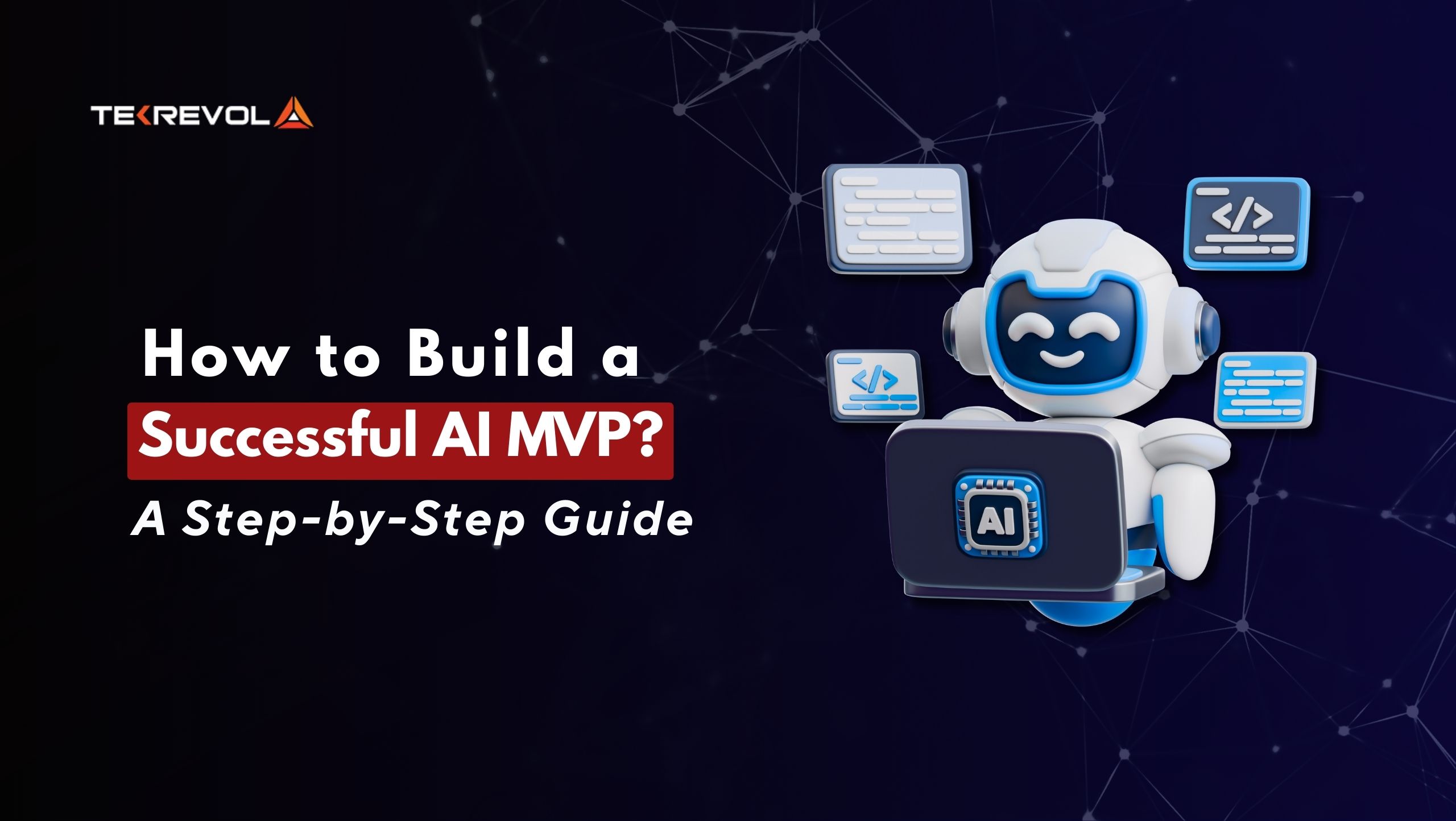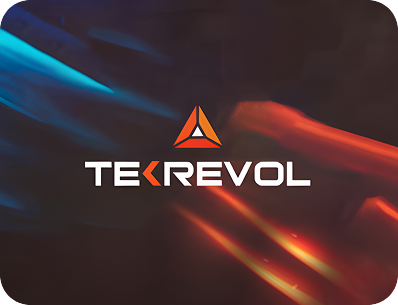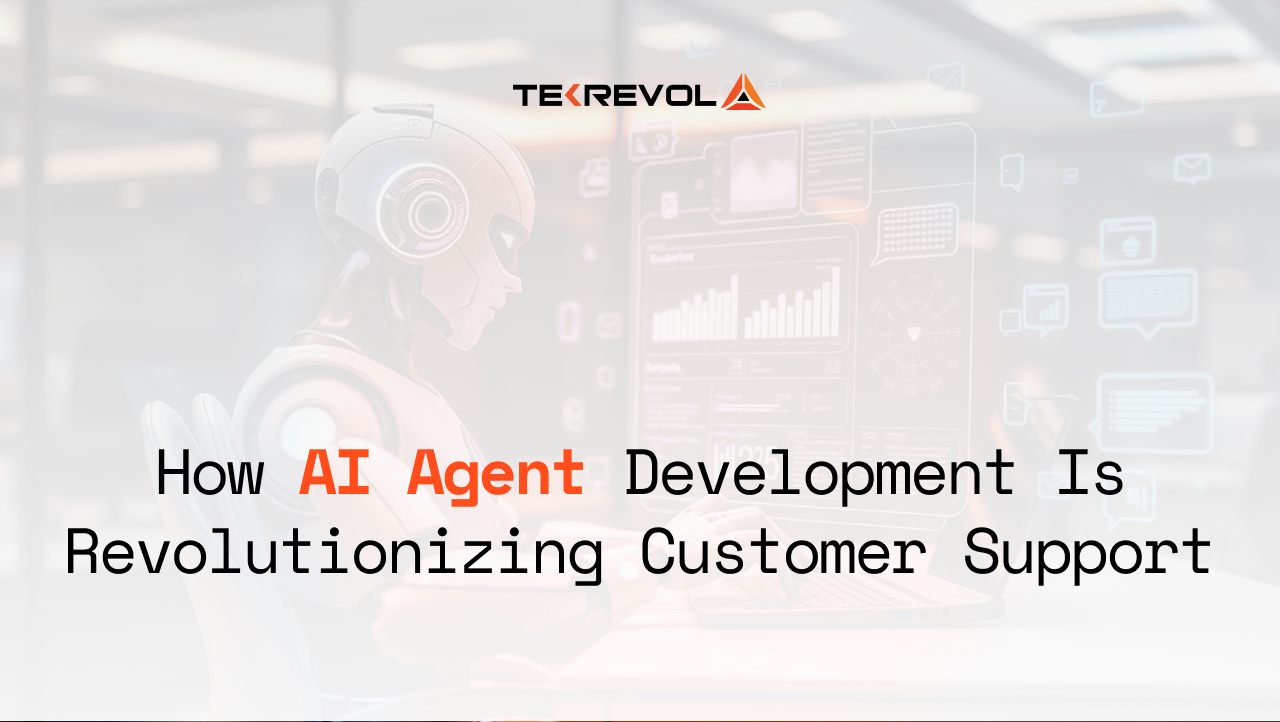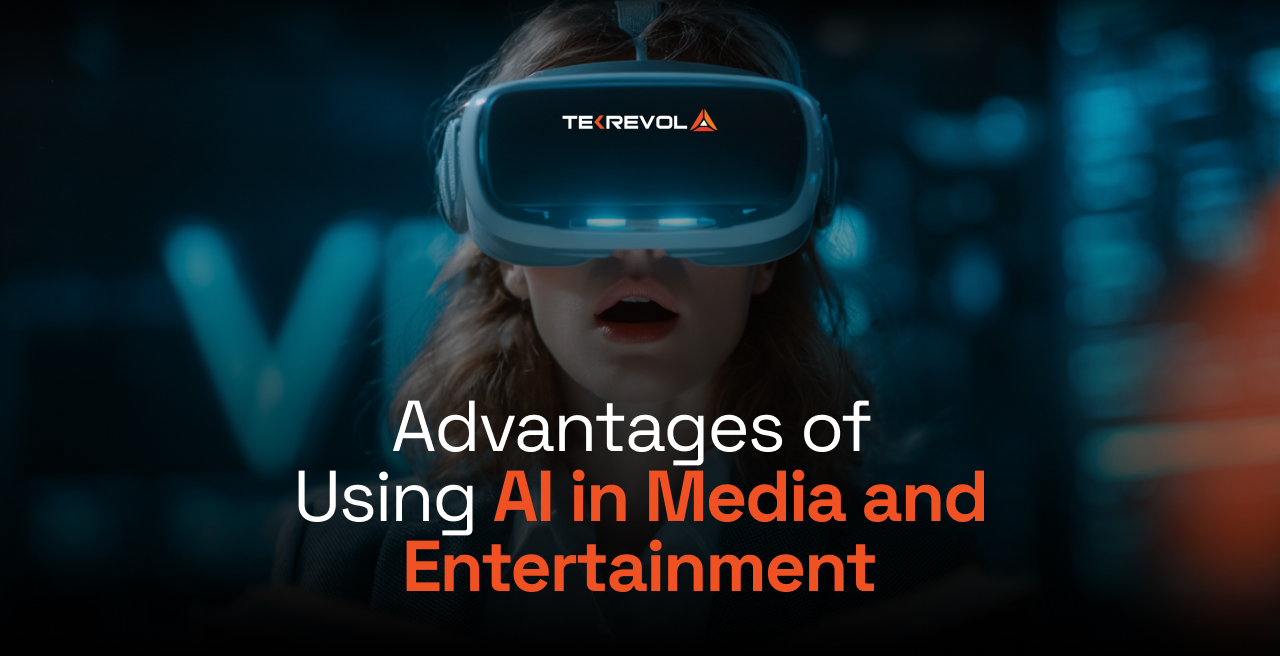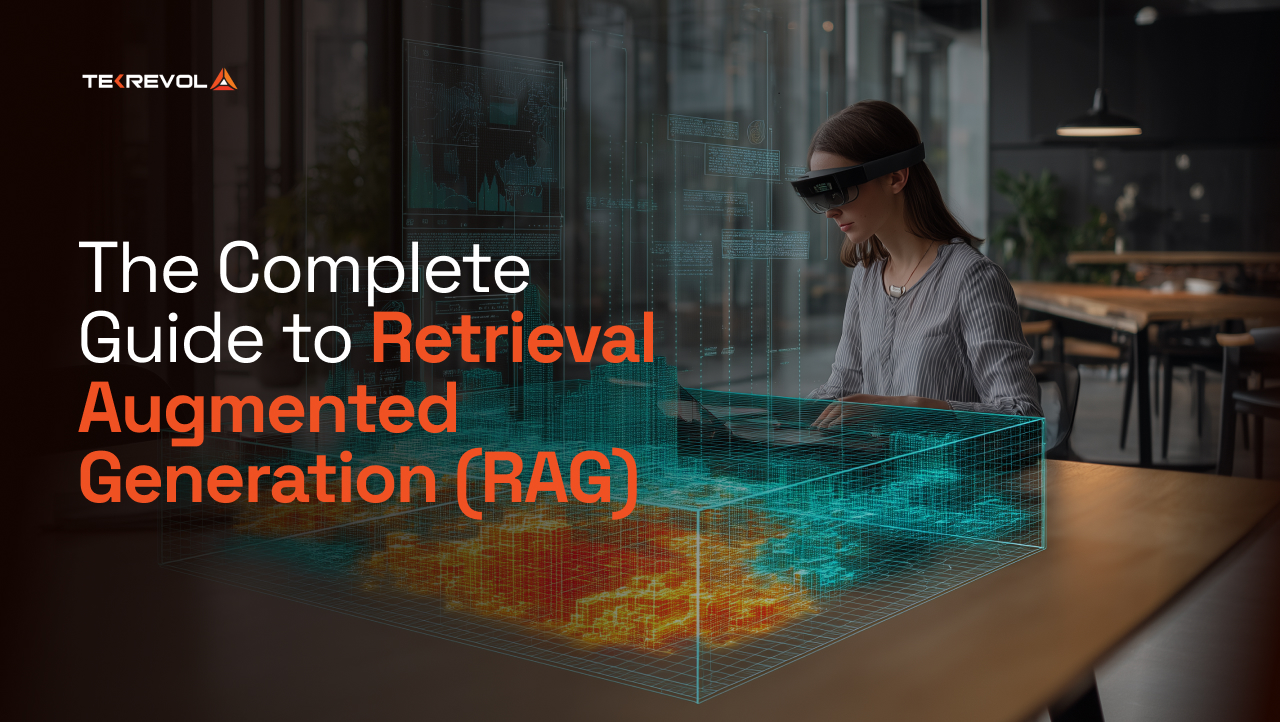Many new businesses don’t fail because their ideas are not up to the mark. They mostly fail because founders bet big too soon.
Suppose you are the owner of a startup with big dreams and have spent months and dollars perfecting your AI tool. But instead of getting ROI, all you are met with is silence.
All this happens when you skip the lean testing phase and jump into bigger execution, but there’s always a smarter path to everything, even for your AI tool. It’s called the AI MVP, a fast-track way to validate your concept before you step in for a big launch.
It might seem you are missing out on something by building an MVP, but to be honest, it’s more about building right than building less.
And if you are one of those looking to invest your time and money correctly, then this AI MVP development guide is just for you. So, let’s dive in right away to see what an AI MVP is, why it matters, and how you can build one to stay on the safe side.
What is an AI MVP?
Okay, we know that building an AI MVP is so important, but a lot of you must be wondering what an AI MVP is.
Well, in simple terms, it is a simplified and basic version of your product that uses AI to solve all your real problems. Instead of building everything at once, all you need to focus on is just one particular feature, like an AI chatbot, and get it tested by users.
This approach is highly useful, especially in AI and GPT-driven MVP development. It lets you test your ideas and adjust functionality by keeping the cost and risks low.
Get Your AI MVP in Just a Few Days
Launch a fully functioning MVP instantly with our team, without wasting your time waiting.
Launch Your MVP Now!Why Does an AI MVP Development Matter?
An AI MVP development lets you test a basic AI functionality instantly without breaking your bank. It helps by showing whether users really need whatever you are aiming to build, and helps you spot risks before scaling.
In 2025, well-known tech giants like Google and Microsoft are expected to spend over $320B on AI development. This indicates how much AI MVP matters for growth to build features that actually matter.
Benefits in Business
- Cost efficiency: AI MVP development helps to invest in essential features only.
- Spot Early Risks: It helps identify potential red flags early, reducing the risk of failure.
- User Validation: Feedback from real users makes sure that your AI MVP is meeting the needs of the market.
Market Edge
- Speed to Market: An AI MVP quickly gets your product in the hands of users, helping you to stay ahead of your competitors.
- Investor Interest: A working AI feature helps to easily gain the investors’ trust quickly.
- Real Feedback Loop: The early use of an AI MVP provides insights guiding towards improvements and shaping up your product for the future.
The Process of a Successful AI MVP Development: Step-by-Step Guide
AI MVP development always begins with a clear and smart plan. Each and every step, from analysing the main problem to running a lean prototype, every single step counts. Undoubtedly, Generative AI helps in creating features faster and improves your MVP; however, following a proper path to development guarantees that your product is actually solving real-world problems.
Let’s have a look at a step-by-step process to see how to build a fully functioning AI MVP.

Step 1: Define the Problem
Always begin with the exact pain point of your users. A clearly defined problem makes sure that your AI MVP is helping to solve something real rather than wasting time and effort. Take an example of retail, AI can help in optimizing inventory management by predicting out-of-stock and overstock products. The clearer you are with defining your problem, the easier it will be to create the feature that adds value.
Step 2: Pin Down the Core AI Feature
Identify the most important AI feature that addresses the said problem. Do not run to pack everything into one AI MVP. Just focus on a single feature to test your idea and gather useful feedback from your users to work on creating something that they can benefit from.
Step 3: Collect and Clean Sample Data
Collect relevant and correct data to test your features. Clean data guarantees that your AI is providing authentic results instead of giving biased output. Even if you are planning for basic features, good sample data lets you test and update smartly. Skipping this step can lead your AI MVP to generate false insights and poor user experiences.
Step 4: Create a Prototype
A prototype is a simple version of your AI MVP feature that shows its value without adding any complexity. It is a test version for users to try and help you check if your idea really works. At this point, put your entire focus on making it functional rather than perfect. Notice how users are interacting with your MVP, which part is causing confusion, and what needs to be fixed.
Step 5: Build a Lean Architecture
Once your prototype ticks all the boxes, you are all set to create a simple system that supports your AI MVP features. Keep it flexible and avoid adding unnecessary features to drive growth. A lean setup saves your budget and gives you more space to improve and scale your AI MVP without facing problems.
Step 6: Testing and Quality Assurance
Even the simplest AI MVP requires proper testing to check whether it is user-friendly and working correctly. Thorough testing and QA in the early stages can expose bugs or performance issues that can grow into larger problems.
Step 7: Deploy In A Limited Capacity
Initially, launch your AI MVP for a limited user group to test it out. By deploying to the smallest group possible, you can track any behaviors as well as see what needs improvement. Early and limited deployment provides you a chance to discover how your AI performs in the ‘real world’ before it becomes a large-scale program that users depend on, while it also helps to determine how much more investment to put into it, and what features to add to the software.
Step 8: Monitor and Update
Do you think your work is done after deployment? Well, not really. Once your AI MVP is live, track the features and listen to all the positive and negative feedback from your users. Gather all the insights and use them to make improvements and fix issues. Updating regularly keeps your AI MVP reliable and responsive.
Tech Stack for AI MVPs: Tools You’ll Need
The right tools and technologies play an important part in developing a successful AI MVP. The tech stack you pick decides if your product is slow and messy or works smoothly. To make everything easier, below is a clear breakdown of the main tools that you will need for your AI MVP development.
| Category | Popular Tools | Why They Matter |
| Programming Languages | Python, R, Julia, JavaScript | Core coding for AI and app logic |
| Frameworks and Libraries | TensorFlow, PyTorch, Hugging Face | Build and train AI models fast |
| Cloud and Infrastructure | AWS SageMaker, Azure ML, Docker, Kubernetes | Deploy and scale easily |
| Databases and Storage | PostgreSQL and MongoDB | Store structured and vector data |
| APIs and Integrations | OpenAI API, Twilio, Zapier | Add AI and connect systems |
| MLOps Tools | MLflow, Weights & Biases, DVC, Kubeflow, BentoML | Manage models and workflows |
| Frontend and Prototyping | React, Flutter, Streamlit, Figma | Design UIs and test quickly |
Quick Overview of AI MVP Cost
Knowing what budget to expect while developing an AI MVP can save you from sudden surprises. Costs vary depending on the scope of your project, the size of the team, and the type of AI you are aiming to build. While an AI MVP is a bit cheaper than creating a complete product, it still requires proper planning.
But don’t worry. There’s some good news for you. The right approach will guarantee that you test your idea without spending a fortune on something that does not look promising.
Cost Ranges
AI MVP development usually involves 4 main areas. Here’s a quick table to give you an overview of what and where you might spend your money:
| Category | Estimated Range |
| Data collection and cleaning | $5,000 – $20,000 |
| Infrastructure and cloud | $2,000 – $15,000 |
| Development hours | $15,000 – $50,000 |
| Testing and iteration | $3,000 – $10,000 |
Factors that Influence the Costs
There are multiple factors that decide the cost of your AI MVP:
- Features: Adding different AI functions highly affects the costs.
- Type of model: Building a custom model from scratch is expensive than using a pre-trained API.
- Data requirements: High-quality and labeled datasets require more time and money.
- Development Team: Cost of in-house development teams in different regions of the USA can vary. A development partner from New York can be a bit costly than one from Florida but provides tighter control.
- Deployment: Releasing your AI MVP to a limited group costs less than getting it ready for a full company-wide launch.

How to Save Budget?
If you have a limited budget but still want to build a solid AI MVP, here is a list of a few smart ways to save money without compromising on quality.
- Use open source tools.
- Start with pre-trained AI models
- Launch a smaller version, then add features.
- Focus on one feature at a time and keep it simple.
Don't Break Your Bank With Surprise Costs
Validate your ideas without extra budget and get a working AI MVP quickly with proper planning and minimal waste.
Get an Estimated Cost BreakdownNormal MVP vs AI MVP: Key Differences
Not every MVP is built the same. A normal MVP development helps you in testing a basic idea quickly, but when it comes to MVP in AI, the entire process takes a shift. Have a look at a side-by-side comparison of normal MVP vs AI MVP:
| Aspect | Normal MVP | AI MVP |
| Core Functionality | Built with static features and logic | Learns and adapts using data and models |
| User Experience | Predictable, rule-based | Dynamic, personalized, and evolving |
| Data Usage | Minimal, often optional | Heavy reliance on clean and labeled data |
| Development Focus | Speed and simplicity | Experimentation, iteration, and validation |
| Scalability | Scales by adding features | Scales by improving models and retraining |
| Risk Factors | Feature gaps, user adoption | Data bias, model accuracy, and compliance |
| Validation | Based on feature usability | Based on real-world data and user feedback |
Pitfalls and Potential Issues to Avoid
AI and GPT-driven MVP development comes with a lot of challenges. Understanding common issues can help you address issues like biased data and over-engineering early to increase your chances of success.
According to a study, more than 80% of Artificial Intelligence and Machine Learning projects never get past the PoC stage, mostly because of misaligned objectives and poor data quality.

Data Gaps
Consider data as the building block of an AI MVP. If the data you put into it is incomplete or unrepresentative, your AI model will give misleading outcomes. For instance, missing records or old information can mess up the predictions and turn your MVP unreliable.
To avoid facing false results, make sure the data you have gathered and fed into it is clean and diverse. Keep checking for gaps and inconsistencies as you tweak.
Scope Creep
One of the major reasons behind the failure of AI MVPs is the scope creep. It happens when you keep adding new features and ideas while training your model. While it looks good to add everything at once, expanding too quickly can delay deployment, increase your budget, and also confuse users.
Just keep your focus on the main AI feature you want to test first. Define clear boundaries for your AI MVP and only add more features after checking the success rate.
Over-Engineering
Over-engineering happens when creators make an AI MVP unnecessarily complex by adding a lot of algorithms and AI models at the initial stage. This results in slow progress and high costs.
To avoid over-engineering, focus on the minimum functionality first to solve the main problem. Avoid adding any extra features or functionalities until your basic version works properly.
Bias in AI
Bias in AI happens when your AI MVP gives misleading results due to flawed design or biased training data. Even a small bias can lead to big ethical issues or create legal challenges.
In this case, keep a proper check and balance of your data, model outputs, and include different perspectives during the development phase.
Compliance and Privacy
Compliance with data protection laws is important for building an AI MVP. Laws like GDPR, HIPAA, and CCPA make sure that the data of users is being handled well and safely. If you ignore these compliance and privacy laws, they can lead you to heavy fines and even damage your reputation.
Document your data handling practices and make sure that your team is well-trained on privacy policies.
How Can TekRevol Rev Up Your AI MVP?
AI MVP development can look exciting and exhausting at the same time, but the real difference lies in whether you are doing it smartly or not. This is where RevAI takes the charge by combining our expertise with generative AI to speed up the process, reduce any chances of errors, and deliver you solutions within a few days.
With a creative approach and precision, our team makes sure to provide you with an AI MVP that learns and improves based on real feedback. You will get the final product designed to save time, cost, and increase your chances of success for future growth.
It does not matter if you are a startup or product manager, TekRevol’s RevAI is for everyone who makes sure that your final product leaves a lasting positive impact. So, are you ready to take a step further? Let’s make it happen now.
Let RevAI Speed Up Your AI MVP
With our combined expertise, you will get your ideas turned into a refined and market-ready MVP, accelerating your time to market.
Discuss Your Idea Over a Free Call